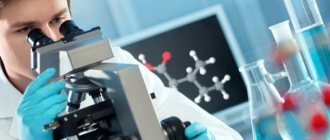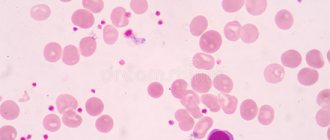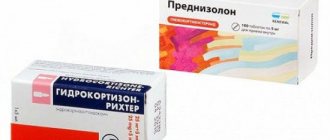In test mode, Muscovites were given access to an electronic medical record—the history of visits to doctors for three years. This practice may soon spread across the country, and people will study how health indicators have changed. More often than others, a general blood test is found in the chart. It includes about two dozen parameters: some are vitally important, others deviate from the norm only in rare diseases. Together with Andrei Besedin, Candidate of Medical Sciences, family doctor at GMS Clinic, we tell you what a change in the level of the main ones means and why it is almost always prescribed first.
When is one analysis enough?
In some cases, the doctor, having received the test result from a fingerprint, already understands what the problem is and how to solve it.
“Blood very often helps to determine various signs of a disease by the balance of blood cells and the ratio of cells,” says Andrey Besedin, candidate of medical sciences, family doctor at GMS Clinic. — For example, a deficiency of red blood cells coupled with low hemoglobin is a typical picture of anemia and it is imperative to look for and eliminate its cause. Sometimes this is enough to immediately prescribe iron supplements at the appointment.”
A blood test makes it possible to understand, for example, that the patient has a serious infectious disease and not a common cold. The level of leukocytes will scream about this.
“With a banal acute respiratory infection or acute respiratory viral infection, you can do without analysis,” says Viktor Shcherbina, a therapist at polyclinic No. 2 in the city of Sergiev Posad. “But often there are additional signs: prolonged fever, severe cough, etc. For example, a patient comes with a cold, but the temperature lasts for more than a week at 37.2-37.5°C. It turned out that the cause was an inflammatory process from pyelonephritis - the patient caught a cold in the pelvic area.”
A general analysis is also a primary oncological screening for diseases of the hematopoietic organs. If suspected, the therapist will immediately refer you to a hematologist or oncologist.
“In case of serious pathology, several parameters may differ from the norm at once,” says Besedin. - There are exceptions - a woman’s temperature “jumped” from 35.5° to 38.5°C for no reason during the day, and there was severe weakness. All the analysis parameters were in order, but the relative and absolute level of lymphocytes turned out to be many times overestimated. This made it possible to detect blood cancer at an early stage.”
Detailed description of the study
Creatine kinase (creatine phosphokinase, CK, or CPK) is an enzyme with pronounced biochemical activity that promotes the formation of energy inside the cell in the form of an ATP molecule.
The KK molecule is presented in the form of 2 subunits - “M” and “B” - these subtypes make up 3 possible forms (isomers) of the enzyme:
- Creatine kinase MM - predominantly localized in skeletal muscles and the muscular layer of the heart (myocardium);
- Creatine kinase BB - present in brain cells, lungs and other tissues;
- Creatine kinase MB - mainly found in myocardial cells.
All of the above forms of CK perform a similar biological function in the cells of the tissues presented - they provide them with energy.
Normally, there is a small amount of creatine kinase in the blood (94-96% is the MM fraction). When muscle cells, and to a lesser extent other cells, are damaged or destroyed, the enzyme comes out and enters the bloodstream: this is the main reason for the increase in CK levels in the blood serum. In this case, the cause of damage and/or destruction of cells and tissues can be very different - inflammation, degeneration, trauma, death (necrosis) and even tumor degeneration. Oncological diseases of the brain, lungs and other localizations are usually associated with high levels of the BB fraction of the enzyme.
The level of creatine kinase MB (CK-MB) increases in various heart diseases, the main of which is myocardial infarction - a pathology in which the blood supply to the heart is disrupted and cardiomyocytes (muscle cells of the heart) die. The main marker of myocardial necrosis (death) are proteins - troponins. CK-MB can also be examined as an additional marker: the enzyme increases after 2-4 hours and reaches a peak 24 hours after necrosis (sometimes later). A special feature of CC-MB is that by the third day after the onset of a heart attack its value is normalized. Also, creatine kinase MB can increase in other heart diseases: cardiomyopathies and myocarditis of various origins.
Increased concentrations of creatine kinase MM (CK-MM) are associated with skeletal muscle diseases. These include:
- Muscular dystrophies (mainly Duchenne and Becker);
- Muscle injuries, including rhabdomyolysis;
- Rheumatological diseases: dermatomyositis, polymyositis;
- Secondary myopathies, for example due to hypothyroidism;
- Excessive physical activity.
Muscular dystrophies - in particular, Duchenne muscular dystrophy - are congenital in nature and, as a rule, occur in boys. At first, the development of these children is no different from the development of healthy peers. But with age, the first symptoms appear:
- Muscle weakness, manifested in the form of clumsiness and lag in physical (the child stops gaining muscle mass) and mental development;
- Weakness begins with the muscles of the pelvic girdle and gradually moves to the muscles of the shoulder girdle, then the back muscles are affected;
- Damage to the heart muscle (myocardium), which manifests itself in the form of heart failure;
- A certain specific symptom is pseudohypertrophy of the lower leg: the size of the calf muscles increases against the background of muscle weakness;
- Spasms, cramps, numbness and/or tingling sensations in the extremities.
This analysis should be taken if there are recommendations from the attending physician as part of the laboratory diagnosis of the above diseases of the heart and skeletal muscles.
What to look for first?
According to therapists, the main parameters are the level of hemoglobin, platelets, leukocytes and ESR, also known as the erythrocyte sedimentation rate. And also the leukocyte formula - the percentage of leukocytes of different types.
Hemoglobin, an iron-containing protein in red blood cells that is responsible for gas exchange and metabolism, is the first thing therapists look at. Hemoglobin levels in women are lower than in men due to differences in muscle mass. Elevated levels are much less common than low levels and may hint at pathologies of the heart, kidneys or bone marrow. He is referred to a hematologist, unless the patient is a donor. After a transfusion, their red blood cells are restored sharply, so their number increases greatly and they have to continue donating blood to maintain balance. But the decrease is most often caused by an unbalanced diet, physical overload and liver disease. A greatly reduced reading is a sign of more serious problems.
“If a man has very low hemoglobin, I suspect bleeding,” Shcherbina shares her experience. “Perhaps tiny drops of blood are released in the stomach or intestines, perhaps it’s hemorrhoids, or the ureter is bleeding due to urolithiasis. In women, this, coupled with pallor, indicates serious anemia.”
Platelets are responsible for blood clotting. If their level is low, the patient will not be taken for surgery - it will not be easy to stop the bleeding. At elevated levels, there is a high risk of thrombus formation—blood clots that block a vessel and cause a heart attack or stroke. The level of platelets indicates the condition of blood vessels, and in combination with others helps to understand the nature of many diseases.
Leukocytes protect the body from infections, viruses and allergens. Before the healthcare reform in Russia, the norm was considered to be (6−8)*109/l, now (4−11)*109/l. A deficiency of white blood cells may indicate problems with the immune system, a lack of B vitamins, or a malfunction of the bone marrow. An elevated level indicates inflammation in the body, and the degree of its intensity helps to understand the erythrocyte sedimentation rate.
“If leukocytes are less than 4*109/l, ESR is more than 30 mm/h, and in the leukocyte formula neutrophils are increased to 70−80%, I am looking for a source of inflammation,” says Victor Shcherbina. — At a temperature below 40 °C it can be pneumonia or acute prostatitis. If the situation is the opposite - an excess of leukocytes and a lack of neutrophils, I suspect lymphocytic leukemia and refer to a hematologist.”
Thus, the leukocyte formula helps to understand the source of problems based on the immune reaction: as a rule, only cells, for example, lymphocytes, react to viruses, and neutrophils react to bacteria. According to Andrey Besedin, for example, inflammation can be caused by both viruses and bacteria, and leukocyte counts are needed to determine treatment tactics and monitor the patient.
References
- Federal clinical guidelines for the diagnosis and treatment of idiopathic inflammatory myopathies, 2013. - 16 p.
- Encyclopedia of clinical laboratory tests / ed. WELL. Titsa. - M.: "Labinform", 1997. - P. 279-281
- Kumar, V., Abbas, A., Fausto, N. et al. Robbins and Cotran Pathologic Basis of Disease, 2014. - 1464 p.
- Cabaniss, C. Creatine Kinase. In: Walker HK, Hall WD, Hurst JW, editors. Clinical Methods: The History, Physical, and Laboratory Examinations. 3rd edition. Boston: Butterworths, 1990.
- Aujla, R., Patel, R. Creatine Phosphokinase. StatPearls, 2020.
Allergy tests: what are they?
Complete blood test - this test will not show what exactly a person is allergic to. However, with allergies, the level of eosinophils increases. General immunoglobulin (Rast-test) is a radioallergosorbent test for the determination of allergens - special antibodies of the IgE class. The main indications for use of the test: atopic (hereditary) bronchial asthma, atopic dermatitis, urticaria, suspected helminths. Immunoglobulin E-total represents the total content of IgE immunoglobulins in the blood. To identify specific IgE, additional research is needed on individual or group types of allergens.
An allergy panel is a special allergy panel that is filled with the patient’s blood serum and helps to study the reaction to many allergens at once. For example, in a medical diagnostic test, 6 complexes of 11 allergens are formed.
- Pollen complex No. 1 - spring-summer.
- Pollen complex No. 2 - summer-autumn
- Food. — food panel complex No. 1
- Food panel complex No. 2
- Nutritional supplements.
- Household substances.
All complexes are designed taking into account the characteristics of the local climate and the city of Sochi. This is the best way to determine allergies.
Skin test - the doctor makes small incisions on the skin and then applies a solution (allergens) there. The fastest and most accurate way to determine the cause of an allergic reaction is in the doctor's office.
Preparing for an immunological blood test
In order for the test results to be accurate, blood should be donated on an empty stomach. It's best to do this in the morning. Optimally, the patient should not eat or drink anything other than water for 12 hours before the test.
You should not drink alcohol on the eve of the test. It is advisable not to smoke for an hour before the test.
Immediately before taking the test, it is advisable to sit down and be at rest for 10-15 minutes to eliminate the influence of physical and emotional stress on the research results.
Sign up for diagnostics Do not self-medicate. Contact our specialists who will correctly diagnose and prescribe treatment.
Immunological blood test indicators
Immunological analysis includes a set of indicators that reflect the composition and functional activity of the main cells of the immune defense, broken down by cell type and the products of their activity (immunoglobulins). A comprehensive analysis of the immune system is quite complex and time-consuming, so depending on the purpose of the study, the immunological analysis may be limited to indicators representing a specific immune function or affected by a specific pathology.
Most often studied:
- subpopulations of lymphocytes
- white blood cells, various types of which recognize foreign structures (antigens), produce antibodies directed against foreign agents, regulate the intensity of immune processes, recognize and destroy altered body cells (for example, cancer cells); - Immunoglobulins
are antibodies whose function is to neutralize infectious pathogens and toxins.
First of all, immunoglobulins of classes A, M, G are studied. Immunoglobulins A (IgA)
provide local immunity of the mucous membranes. Increased levels of IgA are observed in diseases of the skin, digestive and respiratory organs. This is also typical for intoxication, alcoholism, liver and kidney pathologies. - Immunoglobulins M (IgM)
are actively produced during the body’s primary defense reaction, so their increased amounts are observed at the onset of any disease. An increased IgM value is also observed in liver diseases (primarily hepatitis or cirrhosis of the liver). - Immunoglobulin G (IgG)
is the most widespread class of immunoglobulins. They are the main defense produced in response to infection entering the body. Their task is to kill fungi, viruses, pathogenic bacteria, and neutralize toxins produced by the infectious agent. They are responsible for long-term immunity, protecting us from repeated infection. - Immunoglobulins E and D
are produced mainly in response to a parasitic infection (worm infestation) or in the case of atopic allergies.
To determine the body's sensitivity to certain allergens, a special study is carried out - an allergy panel, which identifies specific antibodies to a specific group of allergens (usually immunoglobulins of classes E or G).
Immunological blood test at the "Family Doctor"
For the study, blood is taken from the ulnar vein. You can donate blood for an immunological test at any of the Family Doctor clinics.
The results are interpreted by an immunologist, who takes into account examination data, patient complaints and the results of other studies. The greatest attention is paid to significant deviations from the norm (more than 20%), smaller deviations can be caused by random factors - diet, stress, physical activity, as well as individual characteristics of the body.
Skin tests
Skin testing (scarification method) is one of the fastest and most accurate ways to determine an allergic reaction. These tests are performed in a doctor's office. An allergist-immunologist uses a special scarifier to apply small incisions to the inside of the patient’s arm. Such scratches are painless and only affect the outer layer of the skin. Next, the doctor applies allergens (they are represented by a special solution) to the area of the incisions. Such tests are simple and accurate. After 15-20 minutes did the skin develop a reaction in the form of redness and irritation? This means that the immune system perceives the protein of a particular substance as a “threat”. The advantages of examination using a skin test - the method will allow you to quickly and reliably identify allergens in the doctor’s office. It is theoretically possible to test up to 40 allergens at a time, but this happens extremely rarely. An experienced allergist collects anamnesis and determines the suspected source of “danger” even before performing a skin test, and the study only confirms the preliminary diagnosis. Disadvantages: 10 days before the test you should not take histamines. The reason is that they can affect the skin test result.
Which is better: skin test or blood test?
The doctor will prescribe a skin test instead of a blood test if the patient has hives or other skin diseases that make it difficult to decipher the result. In most cases, such diagnostics are not performed for children under 5 years of age and over 60 years of age, as well as for pregnant women.
“A blood test is the first stage of diagnosis,” explains Vladimir Nikonorov, an allergist-immunologist at the ELISA Medical Center. – But you must trust the laboratory that conducts the research. This is necessary to be sure of the result. Why is skin testing useful? The reaction to allergens is visible immediately at the appointment. But there are precautions. 10 days before the scarification test, a person must stop taking histamines, but this is not always possible. With a blood test, the limit is 5 days and for many this is the best option. As for children, skin tests are preferable for them, since many are afraid of injections and injections, and fear provokes the release of histamine. This may affect the result of the analysis.










